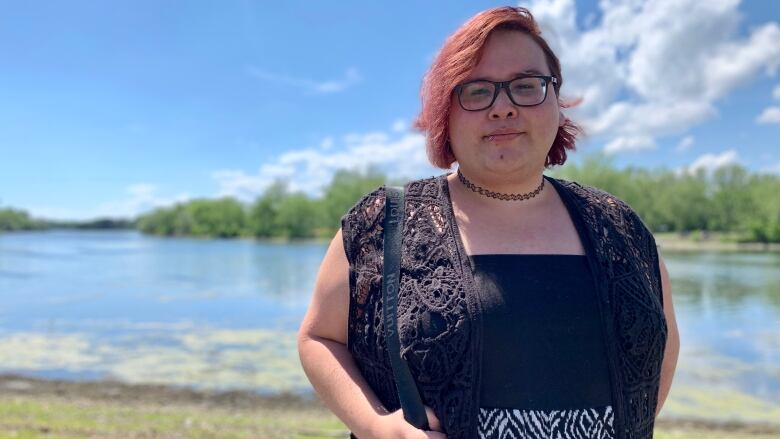Why creating space, visibility is important for the Kanien'keh:ka trans community
It's nice to just be myself, says Morgan Teiakonwathe Curotte

Morgan Teiakonwathe Curotte was among the first people in Kahnawake, a Kanien'keh:ka community south of Montreal, to come out as transgender.
She hopes being out for the last five years is helping provide a positive impact on community members who may be questioning their own gender identities.
"It's pretty scary, but I like to think that with more of us being outjust being ourselves, it will make it easier for the people who will come after us," she said.
It's a part of bringing to life aHaudenosaunee philosophy where decisions today benefit the next seven generations into the future.
"There'll be a community ready for them . . . . I just hope it helps a little bit for people to be able to take down those walls and shine."
The 31-year-old came out twice, first as gay at 25, and then as transgender about a year later. She said it was a difficult experience, especially when it came time to talk to her family.
"I was really struggling," said Curotte.
"I just said to myself, I had a choice here either embrace this person that I am or risk being a depressed person and committing suicide.Opening up about all of these things allowed us to understand each other more. With that understanding comes acceptance.
The transgender community in Kahnawake is small, but Curotte said more space and visibility is needed to reduce stigma.
"We need to have a place made if there isn't already a place in our culture for queer folks," she said.
"Just making that space because we're here, and we're here now."
Rebecca D'Amico, clinical supervisor of secondary prevention at Kahnawake Shakotiia'takehnhas Community Services, said the LGBTQpopulation is more at risk for mental health issues, bullying, substance abuse, and suicide, which is why the health and social services organization promotes education and awareness around gender and sexual diversity.
There havebeen barbecues, training sessions and workshops, as well as information and resources on social media to promote education and awareness.
To mark the international day against homophobia and transphobia on May 17, there was also a campaign with rainbow balloons and a message of celebration of gender and sexual diversity across community organizations and businesses.
"It's one of those areas that we know we need to have more visibility around," said D'Amico.
"We want people to feel safe to go anywhere, normalizing it, bringing people awareness so that people who haven't come out yet feel like they belong."
MC Snow, who uses gender-neutral pronouns, said theballoons were the first time they noticed anything in the community recognize transgender rights, and said they would like to see more of it whether that means Pride flags being raised or a parade like some First Nations have organized.
"I think for a lot of the young people coming out, they don't want to come out into a world where they don't feel accepted. Normalising it would go a long way towards making our kids comfortable and OK with themselves," said Snow.
The 55-year-old changed their name on Facebook a few months ago, as a part of an ongoing process of coming out as trans.
"I think people need to just accept the fact that we do exist. We always have," said Snow.
"One of the barriers is nobody wants to feel ostracised. A lot of people think that if they do come out, they might face that from the community."
This story is a part of a CBC Indigenous series celebrating gender and sexual diversity in Indigenous communities.












_(720p).jpg)


 OFFICIAL HD MUSIC VIDEO.jpg)
.jpg)



























































































